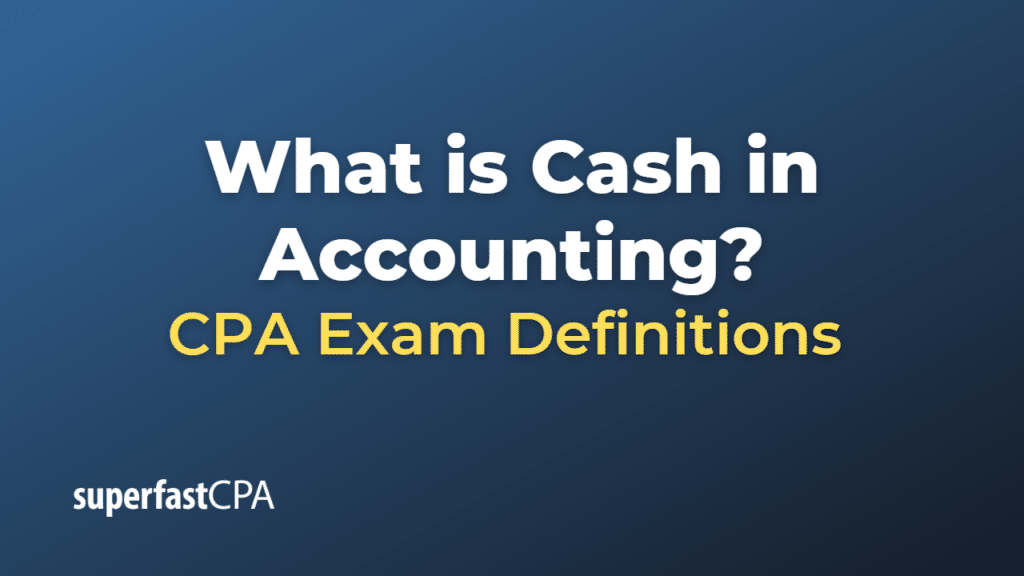Cash
In accounting, cash refers to the most liquid assets of a business or individual, which includes currency (coins and banknotes) and the balances held in checking and savings accounts at financial institutions. Cash is considered the most basic and essential asset because it can be easily and immediately used to settle transactions, pay for goods and services, and meet financial obligations such as payroll, taxes, and debt payments.
On a company’s balance sheet, cash is classified as a current asset and is usually listed first among assets. This is because of its high liquidity and its crucial role in the day-to-day operations of a business. In financial analysis, cash is often considered in the context of cash flow, which reflects the inflows and outflows of cash over a specific period. This helps businesses and investors assess the company’s ability to generate positive cash flow, meet its financial obligations, and maintain sufficient liquidity for ongoing operations.
It’s important to note that cash is distinct from other liquid assets such as short-term investments or marketable securities, which can be easily converted into cash but are not considered cash themselves. These assets are often reported separately on the balance sheet under categories such as “cash equivalents” or “short-term investments.
Example of Cash
Let’s consider a fictional company, “HealthyBites Inc.,” to illustrate the concept of cash in accounting.
HealthyBites Inc. is a small business that produces and sells organic snacks. Its balance sheet lists the following cash-related items as of December 31, 2022:
- Cash in checking account: $25,000
- Cash in savings account: $10,000
- Cash on hand (petty cash): $500
In this case, HealthyBites Inc.’s total cash balance would be:
Total Cash = Cash in checking account + Cash in savings account + Cash on hand Total Cash = $25,000 + $10,000 + $500 Total Cash = $35,500
This total cash balance of $35,500 would be reported as a current asset on the company’s balance sheet, typically listed as the first item under the assets section.
In addition to cash, HealthyBites Inc. might also have other liquid assets, such as short-term investments or marketable securities. These items are not considered cash but can be easily converted into cash if needed. For example, if the company has $5,000 in short-term investments, this amount would be reported separately from cash on the balance sheet, usually under a category like “cash equivalents” or “short-term investments.
By tracking and reporting cash balances, HealthyBites Inc. can assess its liquidity position, manage its working capital effectively, and ensure it has sufficient funds to cover day-to-day expenses, such as purchasing raw materials, paying salaries, and meeting other financial obligations.













